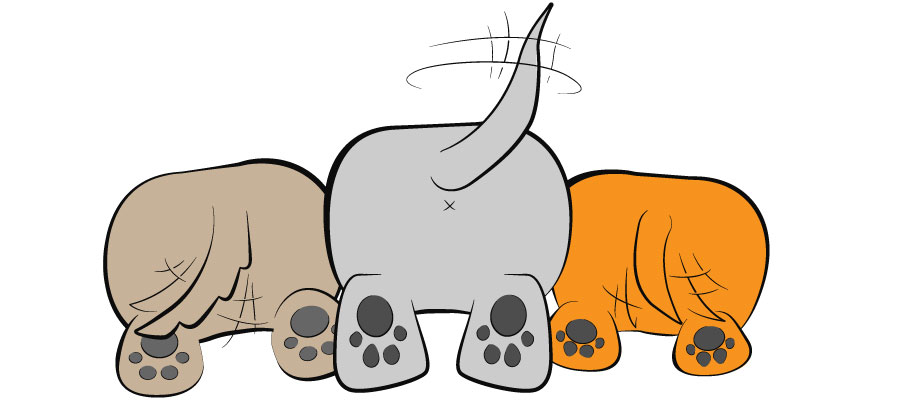Humans use our face and body to communicate with other humans non-verbally; dogs use their ears and tails. And the science behind how dogs use their tails to communicate with other dogs, as well as humans is fascinating.
Dogs wag their tails to convey happiness, anxiety, alertness, and most likely a vast array of other emotions. Dogs pick up on each other’s wagging signals that will influence whether they will respond positively or negatively.
The Wag
Does a dog know he is wagging his tail? The answer is maybe. Some liken a dog wagging its tail to a human smiling. Sometimes you do smile unconsciously, like when you see something funny or get excited. Other times you make yourself smile, like for pictures or when you cross paths with a person you didn’t like in high school in a grocery store or at a concert.
The Left and Right Tail Way
Just like humans, canines use their right and left brains differently. If a dog’s tail is wagging more to the right, that means he is using more of his left brain, suggesting he sees a familiar person or a signal they want to be approached by a person or another animal. Conversely, if a dog’s tail is wagging more to the left, that is a sign of an unwanted interaction with a person or another animal.
The Helicopter Tail
Maybe you call this wag the circle wag or the propeller wag, but it is the friendliest wag a dog can give you. This wag is reserved for when a dog is truly ecstatic. Think seeing an owner after an extended time away or getting hyped up over playing with a toy.
The Straight Tail
A stiff horizontal tail conveys a dog’s curiosity, anxiety, or alertness to a potential threat of another dog or human. It can also be a trained response for hunting dogs to use when indicating to their handler that there is prey in the area.
The Tucked Tail
Dogs lower their tails to reduce their appearance in an effort to avoid conflict or stressful situations. You will also notice that a dog will tuck his tail when he is in trouble, most likely responding to the tone and cadence of an owner’s voice.
Canines are surprisingly keen on picking up tones, inflections, and speeds of what their owner’s voice is conveying.
The Docked Tail
Whether your pup was born with a docked tail or had it docked shortly after birth, you can still pick up on your pup’s mood. You’ll have to pay attention to your dog’s ear position, head tilts, and other body language cues to get an idea of how they feel.
So pay attention to what your pup is communicating to you with his wag. You may be surprised by what your canine is telling you.
